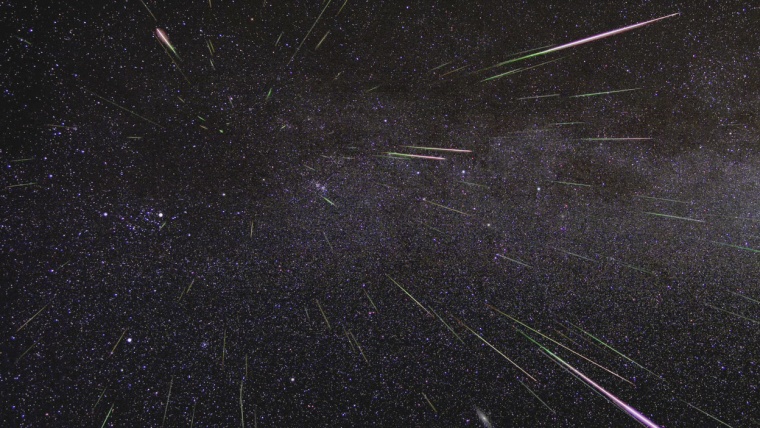Heads up, space fans! We are in the midst of one of the best annual meteor showers - the Perseids, so called because they appear to radiate from the constellation Perseus.
The Perseids are well loved because they are fairly reliable and because you don't have to get frostbite to see them, like some other meteor showers. The only sacrifice they require on your part is to either stay up quite later or get up before the Sun. This year, I'd actually recommend the latter since the moon is waxing and will be full next week. We astronomers aren't usually anti-Moon, but you'd be surprised at how much of the sky a bright moon can wash out. It's like nature's own form of light pollution.
Meteor showers occur when the Earth plows through a trail of dust left in the orbit of a periodic comet. We have the Perseids because of Comet Swift-Tuttle, a comet roughly 26 km in diameter (not much more than the length of Manhattan) which orbits the Sun once every 133 years. Comets are loose masses of dust, rocks, and ice. When the get close to the Sun, their ices actually sublimate (go from solid to gas) which causes pieces of dust and rock, previously cemented in place with ice, to break off. Some of the gas and dust stays in a cloud around the comet in the form of a coma and the rest of the dust gets strewn out behind the comet and continues to orbit the sun like a trail of breadcrumbs. Despite most comets being less than 80km in size, their dust tails can be much, much wider - up to 10,000-100,000km. So the comet's orbit doesn't need to precisely intersect with Earth's to cause a meteor shower.
Technically the Perseids occur from mid-July to late-August, but the peak occurs somewhere in the middle when we encounter the densest area of the dust tail. This year's peak is predicted to be the night of Thursday, August 11th into the morning of Friday, the 12th. In theory, there could be up to 200 meteors per hour, but that requires the most ideal conditions - having a full view of the sky away from any/all artificial lights. Very few of us will be somewhere like that, so if you have to make do like me, try to get away from streetlights at least and somewhere you can see a large part of the sky. Then lie down, look up, and wait.
Keep on geeking!
@Summer_Ash, In-house Astrophysicist
